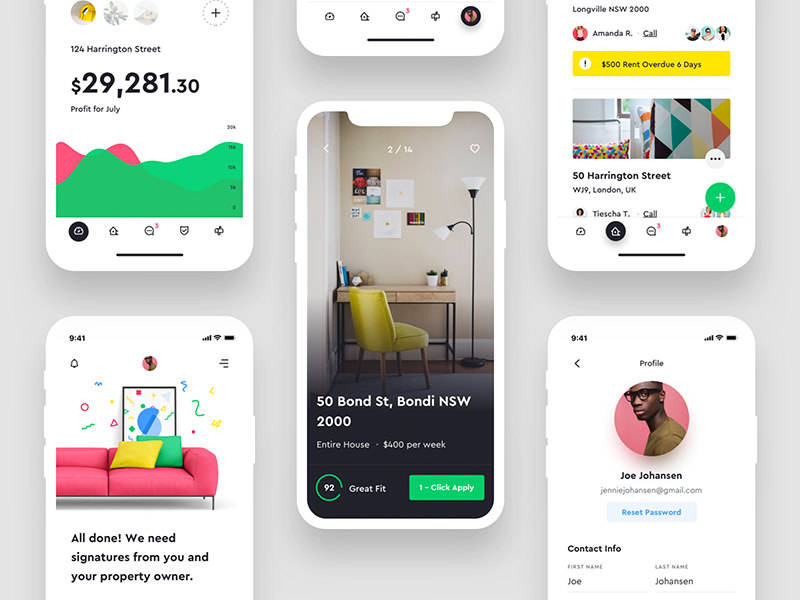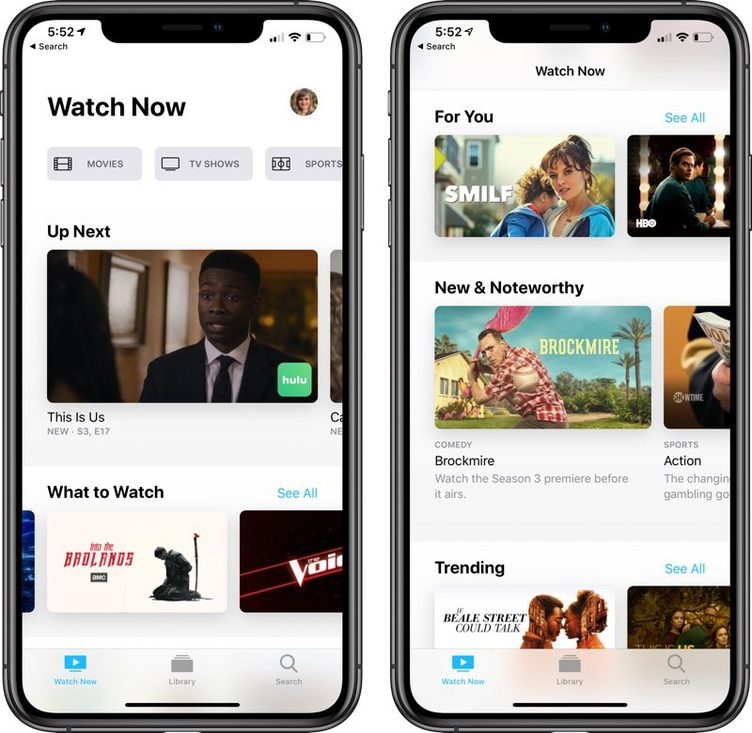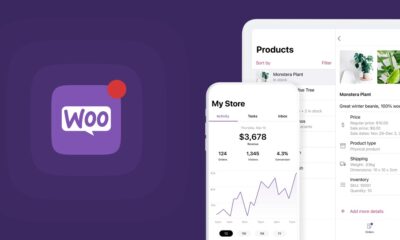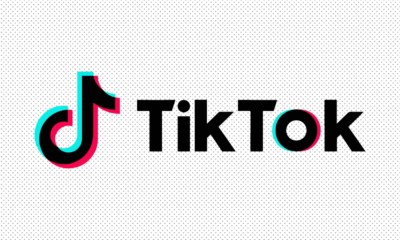Technology
7 Mobile App Frameworks Every UI/UX Designer Should Know in 2023


In the fast-evolving world of mobile app design, the demand for user-friendly and visually appealing interfaces has become increasingly important. With the rise of mobile devices, more and more people are accessing the internet via smartphones and tablets, making it essential for businesses to have a mobile app that provides an excellent user experience. To create stunning mobile app interfaces, UI/UX designers need to use the best mobile app frameworks. In this article, we will explore the top 7 mobile app frameworks for UI/UX designers in 2023.
7 Best Mobile App Frameworks for UI/UX Designers


1. React Native
React Native is a popular framework used to build mobile applications using JavaScript. It is an open-source platform that allows developers to create high-quality mobile apps that work seamlessly on both Android and iOS platforms. React Native offers several benefits for UI/UX designers, including reusable components that can be easily shared across multiple projects, and the hot reloading feature, which allows developers to see changes made in the code in real time. Some of the successful mobile apps built with React Native include Facebook, Instagram, Skype, and Walmart.
2. Flutter
Flutter is an open-source mobile app development framework from Google that allows developers to create high-performance, natively compiled applications for both Android and iOS platforms. Flutter has become increasingly popular among developers because it offers several benefits, including a fast development cycle and customizable widgets that make it easier for UI/UX designers to create visually appealing and engaging mobile applications.
Flutter’s customizable widgets are among its most significant benefits for UI/UX designers, as they enable designers to build unique user interfaces that stand out from the crowd. The widgets can be easily customized to match the app’s brand and design requirements, with changes applied to all widgets throughout the application. Additionally, Flutter’s fast development cycle is beneficial for UI/UX designers because it allows for quick prototyping and testing. Developers can use Flutter’s hot reload feature to see changes in real-time, which significantly speeds up the development process.
Several successful mobile apps have been built using Flutter, including the popular finance app, Reflectly, and the fitness app, Watermaniac. Reflectly was able to create a unique user interface using Flutter’s customizable widgets, while Watermaniac was able to provide an engaging user experience with smooth animations and fast performance, thanks to Flutter’s natively compiled code. Overall, Flutter has proven to be a useful tool for UI/UX designers, allowing them to build visually appealing and high-performing mobile apps quickly and efficiently.
3. Ionic
Ionic is a cross-platform mobile app development framework that allows developers to create high-quality mobile apps for both Android and iOS platforms. It offers several benefits for UI/UX designers, including pre-built UI components that can be easily customized to meet specific design requirements, and an easy-to-use platform that allows for quick prototyping and testing. Some of the successful mobile apps built with Ionic include MarketWatch, Diesel, and Sworkit.
4. Xamarin
Xamarin is a cross-platform app development framework that uses the C# programming language to build native mobile applications for iOS, Android, and Windows platforms. With Xamarin, developers can share a significant portion of the codebase across multiple platforms, which significantly reduces the time and effort required to develop mobile applications.
One of the significant benefits of Xamarin for UI/UX designers is the ability to share code across multiple platforms. This means that developers can create a consistent user experience across all platforms, which is essential for building brand recognition and customer loyalty. Xamarin also provides access to a large library of pre-built user interface components, which can be customized to match specific design requirements. This reduces the time and effort required to develop the UI/UX of the application.
Some of the successful mobile apps built with Xamarin include The World Bank, Alaska Airlines, and Olo. The World Bank used Xamarin to develop its mobile application, which provides access to data on poverty, health, and education in over 200 countries. The application has been highly rated by users and has won several awards for its innovative design and functionality. Alaska Airlines also used Xamarin to develop its mobile application, which allows users to book flights, manage reservations, and receive real-time flight updates.
The application has been widely praised for its ease of use and functionality. Olo, a leading provider of digital ordering and delivery solutions for restaurants, also used Xamarin to develop their mobile application, which allows users to order food, track deliveries, and earn rewards. The application has been highly rated by users and has helped Olo to establish a strong presence in the highly competitive food delivery market.
5. jQuery Mobile
jQuery Mobile is a mobile app development framework that uses HTML5 and CSS3 to build mobile applications. It is an open-source platform that allows developers to create high-quality mobile apps that are easy to use and maintain. jQuery Mobile offers several benefits for UI/UX designers, including an easy-to-use interface that allows for quick prototyping and testing, and cross-platform compatibility that allows for easy deployment across multiple platforms. Some of the successful mobile apps built with jQuery Mobile include Pandora, the BBC Olympics app, and the Financial Times app.
6. PhoneGap
PhoneGap is a popular framework for building cross-platform mobile apps. It is an open-source platform that allows developers to create high-quality mobile apps using HTML, CSS, and JavaScript. PhoneGap offers several benefits for UI/UX designers, including an easy-to-use interface that allows for quick prototyping and testing, and an open-source nature that allows for easy customization. Some of the successful mobile apps built with PhoneGap include Wikipedia, The Economist, and TripCase.
7. Onsen UI
Onsen UI is a framework for building hybrid mobile apps that allow developers to create high-quality mobile apps for both Android and iOS platforms. It offers several benefits for UI/UX designers, including customizable UI components that can be easily adapted to meet specific design requirements, and an easy-to-use platform that allows for quick prototyping and testing. Some of the successful mobile apps built with Onsen UI include KLM, Zappos, and Gogo.
Conclusion
In conclusion, the development of mobile applications is a complex and rapidly evolving field, with an ever-increasing number of mobile app frameworks available to developers. UI/UX designers need to be familiar with the latest frameworks to create visually appealing and engaging applications. The seven mobile app frameworks discussed – React Native, Flutter, Ionic, Xamarin, jQuery Mobile, PhoneGap, and Onsen UI – each have their unique advantages, including customizable UI components, fast development cycles, and ease of use.
When choosing a framework, developers and designers should consider the specific needs of their project and choose a framework that best fits those needs. React Native, in particular, is a popular framework for building mobile apps with JavaScript and is commonly used by reputable ReactJS development. With the right mobile app framework, designers can build high-quality mobile applications that provide an engaging user experience across multiple platforms.





 Technology2 months ago
Technology2 months agoWhy Adding Videos to WooCommerce Product Galleries is Essential in 2025



 General2 months ago
General2 months agoWhat Is Smart Construction? A Beginner’s Guide



 Technology1 month ago
Technology1 month agoHow to Send WooCommerce SMS Notifications for Orders



 Technology1 month ago
Technology1 month ago7 Essential TikTok Metrics to Track for Higher TikTok Views in 2025

 Model3 weeks ago
Model3 weeks agoTiffany Stratton: Biography, Wiki, Age, WWE Career, Net Worth, Before Fame, Boyfriend





 Technology4 weeks ago
Technology4 weeks agoTop 5 Tips for Using File Uploads in Your WooCommerce Store Efficiently

 Technology3 weeks ago
Technology3 weeks agoWhy Airlines Are Using Virtual Reality Services for Pilot Training



 General4 weeks ago
General4 weeks agoThe Hidden Costs of a DUI & How a Lawyer Can Help You Avoid Them




You must be logged in to post a comment Login